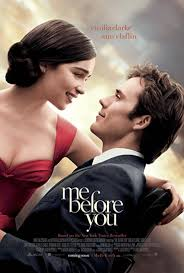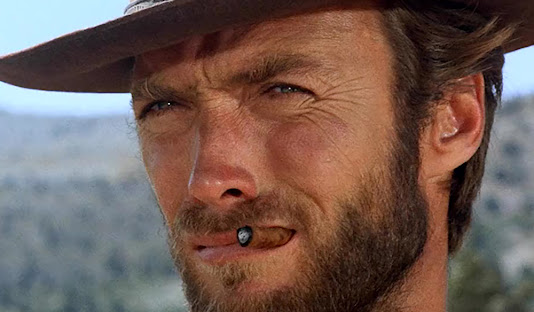Types of Photography:
Why do passport pages and paper currency use Intricate patterns?
Passports and paper currency use intricate patterns to make copying difficult.
What do you notice about the colours used on the background images of passports?
They have fine line drawings of important people and dozens of patterns.
They use primary colours and pastel colours and the drawings of buildings and people indicate that they're very important.
How do they ensure the text can be read if printed over an image?
Put the text colour in black.
Adobe Premiere Pro Trailer:
Using Adobe Premiere Pro, I created this trailer by using two ready-made trailers and merging them into my own. I added credits, a new soundtrack, and transitions. If I had to make changes to this trailer, I would've added different transitions and more writing in the credits for more information.
Natural History Museum Photos:
I found these photos the most interesting because of the textures and the X-ray vision effect used in the fourth picture. I especially liked the 3rd image because it gives a minimalist aesthetic. The first photo is a photograph of the bones of a giraffe, the 2nd photo is a photograph of the ceiling, the third photo is a photograph of a photo and lastly, the fourth photo is a photograph of x-rays.
Genre:
Comedy:
Comedy is a genre of fiction that consists of discourses or works intended to be humorous or amusing by inducing laughter.
Romance:
A romance novel or romantic novel generally refers to a type of genre fiction novel that places its primary focus on the relationship and romantic love between two people.
Action:
Action film is a film genre in which the protagonist is thrust into a series of events that typically involve violence and physical feats.
Adventure:
Adventure fiction is a type of fiction that usually presents danger, or gives the reader a sense of excitement. Some adventure fiction also satisfies the literary definition of romance fiction.
Crime:
Crime is a term used to describe narratives that centre on criminal acts and especially on the investigation, either by an amateur or a professional detective, of a crime, often a murder.
War:
War film is a film genre concerned with warfare, typically about naval, air, or land battles, with combat scenes central to the drama.
Horror:
Horror is a genre of literature, film, and television that is meant to scare, startle, shock, and even repulse audiences.
Family:
Horror is a genre of literature, film, and television that is meant to scare, startle, shock, and even repulse audiences.
Portrait Photos & Write-Up:
Passport Pattern:
To craft an intricate pattern, I began by placing a single line on the canvas. duplicate this line and then proceed to transform and mould the duplicates into elegant swirls. this creative process can yield captivating and distinctive designs. One thing I can improve is to add more colour to make it colourful.
Passport Cover Part 2:
After I had created the passport patterns, I imported the pattern into InDesign and then added text to complete the look. One thing I could improve on is adding more text on page two to look more fulfilled.
Portrait Photography:
(Architecture):
George Hurrel Research:
Shot Sizes & Camera Angles:
Eye Level:
the cinematographer positions the camera angle directly at the eye level of the character. The subject is usually captured from the knees to the head, with minimal surrounding context.
Low Angle:
A high-angle shot is taken from above the subject's eye level, making them appear smaller or more vulnerable. It's often used in visual storytelling to convey a sense of weakness or inferiority.
Dutch:
A Dutch angle is a cinematic technique where the camera is intentionally tilted, creating a slanted frame. It's used to evoke tension or unease in the viewer, adding visual dynamism to a scene.
Birds Eye:
A bird's eye view shot is taken directly above the subject, providing a comprehensive perspective similar to what a bird might see from the sky. It's often used in visual media to offer a unique vantage point and show the entirety of a scene or location.
Worms Eye:
A worm's-eye view shot is captured from ground level, looking upward, to make subjects appear larger or more imposing. This technique conveys a sense of grandeur and dominance in visual media.
Extreme Long Shot:
An extremely long shot is taken from a significant distance, showcasing the subject as relatively small within the frame and emphasizing the surrounding environment. It's commonly used in film and photography to establish a scene's location, context, or scale.
Wide/Long shot:
A wide shot, or long shot, captures a broad view of a scene, showing the subject in its entirety and emphasizing the surrounding environment. It's often used to establish setting, context, or spatial relationships in cinematography.
Full Shot:
A full shot is a cinematographic or photographic framing technique that captures the entire subject within the frame from head to toe. This shot provides a complete view of the subject and is commonly used to show a character's posture, body language, and overall presence in a scene.
Medium/Mid Shot:
A medium shot captures the subject from the waist up, providing a view between a full shot and a close-up. It's commonly used to show interactions and convey both facial expressions and body language.
Close Up:
A close-up shot captures a subject in great detail, often focusing on the face or a specific object, with minimal background. It is used for emphasis, emotional impact, or to highlight important details.
Extreme Close-Up:
An extreme close-up shot captures a subject in intense detail, often focusing on specific features like the eyes or mouth, with minimal or no surrounding context. It's used for heightened emphasis, emotional impact, or to highlight specific details.
POV:
A POV shot, or Point-of-View shot, shows a scene from the perspective of a character, giving the audience the experience of seeing through their eyes. It enhances immersion and engagement in the cinematic narrative.
Over The Shoulder:
An over-the-shoulder shot is a cinematographic technique capturing a scene from behind one character, showing their perspective and the character they are facing. It's often used in dialogue scenes for spatial context and connection between characters.
Magazine Spread:
What are your final items? (description of it) What influenced you to create these items? (Quote some research/skills you like/strengths)
My final item is a magazine spread of how Playboi Carti got accepted into the fashion industry and how his fashion inspired others.
Did you make a plan and follow it? Was it useful? If you didn’t make a plan would it have helped if you did?
Yes. I made a plan to help me get to this final product. It was useful because it gave me an idea of this new concept.
How did you create your items? Tools/techniques/programs you used.
I used InDesign to create this. I added columns and used the ruler to align them into place which created a neat layout. I got pictures of Playvoi Carti from Pinterest and made space between the columns to add the pictures. To make it stand out, I put in a quote to show other people's perspective of his fashion.
What did you research? Was your research successful (did it influence your final items) and why?
I researched Playboi Carti's fashion which is how I got that quote.
Were there any problems? What did you do to overcome them?
Fortunately, there weren't any problems that I had to overcome.
What went well with the product? How well did you complete the items?
What went well was the font and colour I used to match the whole setting and design. The photos really topped it off by having them in black and white.
What went less well? Is it messy? Not what you wanted? Not finished? Why do you think this happened?
This project is definitely unfinished. I could've added more to it.
If you were to repeat the process again, what would you do differently and why?
I would've added more quotes, a subheading and more photos.










































3.png)
2.png)




























.jpg)





No comments:
Post a Comment